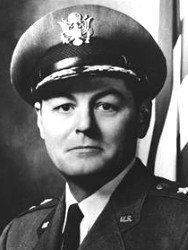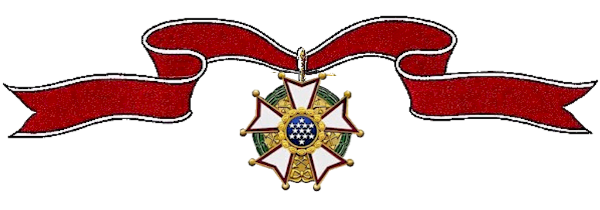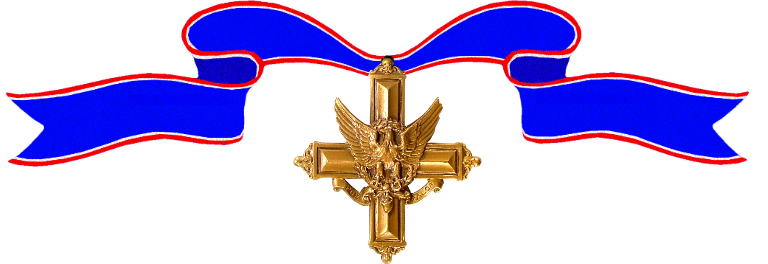Richard Carmichael graduated from the U.S. Military Academy at West Point, Class of 1936. Among the 16 bomber’s Colonel Carmichael led on this mission was one B-17 piloted by Harl Pease. Pease was lost in the mission, and was subsequently awarded the Medal of Honor. Later in the war Colonel Carmichael piloted the first American B-29 to be shot down over Japan in World War II. He retired in 1961 as a U.S. Air Force Major General.

–
Cemetery:
Awards Received
-

Legion of Merit
-

Legion of Merit
-

Distinguished Service Cross
-

Legion of Merit
-

Distinguished Service Cross
-

Legion of Merit
-

Prisoner of War Medal
-

Legion of Merit
-
Legion of Merit
Service:
United States Air ForceRank:
Major GeneralAction Date:
May 16, 1954 – July 11, 1958
The President of the United States of America, authorized by Act of Congress, 20 July 1942, takes pleasure in presenting a Fourth Bronze Oak Leaf Cluster in lieu of a Fifth Award of the Legion of Merit to Major General Richard Henry Carmichael (ASN: 0-20203), United States Air Force, for exceptionally meritorious conduct in the performance of outstanding service to the United States as Director of Personnel Procurement and Training, Headquarters United States Air Force, from 16 May 1954 to 11 July 1958. In this responsible assignment, the forceful leadership, outstanding foresight, and ceaseless efforts of General Carmichael were instrumental factors in the resolution of many complex personnel problems of major importance to the operational capability of the Air Force. During this time, he skillfully directed the recent augmentation of Reserve Officers into the Regular Air Force; the development of Retention and Reenlistment Programs for officers and airmen; the establishment of criteria for the selection of cadets for the Air Force Academy; and the formulation of an accelerated re-training program for airmen. The plans and policies pioneered by General Carmichael and his evaluation of personnel problems, have materially assisted in the realization of an effective long range personnel system. Through his exceptional initiative, leadership, and resourcefulness, General Carmichael has reflected great credit upon himself and the United States Air Force.
-
Legion of Merit

Headquarters, Far East Air Forces, General Orders No. 106 (November 6, 1950)The President of the United States of America, authorized by Act of Congress, 20 July 1942, takes pleasure in presenting a Second Bronze Oak Leaf Cluster in lieu of a Third Award of the Legion of Merit to Colonel Richard Henry Carmichael (ASN: 1214A/0-20203), United States Air Force, for exceptionally meritorious conduct in the performance of outstanding services to the Government of the United States in Korea from 31 July 1950 to 25 July 1950. The singularly distinctive accomplishments of Colonel Carmichael reflect the highest credit upon himself and the United States Air Force.
-
Distinguished Service Cross
Service:
United States Army Air ForcesRank:
Colonel (Air Corps)Regiment:
58th Bombardment WingDivision:
20th Air ForceAction Date:
August 20, 1944
Headquarters, U.S. Strategic Air Forces, General Orders No. 85 (November 27, 1945)The President of the United States of America, authorized by Act of Congress July 9, 1918, takes pleasure in presenting a Bronze Oak Leaf Cluster in lieu of a Second Award of the Distinguished Service Cross to Colonel (Air Corps) Richard Henry Carmichael (ASN: 0-20203), United States Army Air Forces, for extraordinary heroism in connection with military operations against an armed enemy while serving as Pilot of a B-29 Very Heavy Bomber of the 58th Bombardment Wing, TWENTIETH Air Force, while participating in a bombing mission on 20 August 1944, against enemy ground targets in Japan. Colonel Carmichael was Formation Commander of three B-29 aircraft on a precision daylight attack from a forward base in China against the coke ovens of the Imperial Iron and Steel Works at Yawata, Japan. Twenty minutes before the start of the bomb run, the formation was attacked by 35 to 50 enemy interceptors utilizing phosphorous aerial bombs and ramming tactics, and continuing throughout the bomb run. Disregarding fighters and the increasingly heavy and accurate anti-aircraft fire, Colonel Carmichael kept his formation together and continued on the strike. In turning away, Colonel Carmichael’s plane was hit by an aerial bomb in the middle wing section, putting the two starboard engines out of commission, setting several fires along the wings, and injuring two crew members. The plane went into a steep, slow diving spin with Colonel Carmichael fighting to regain control. He checked the descent long enough for seven crew members to parachute to safety. Colonel Carmichael was determined to attempt to land the plane because of the two injured men who were unable to bail out, but at about 500 feet the entire right wing burned through and dropped off. He saw that he had done all that was humanly possible to save the lives of the two remaining men and, realizing the futility of remaining with his crippled bomber, parachuted to the ground. This mission, the first daylight strike against the home islands of Japan since the Tokyo raid of 1942, completely destroyed the vital enemy iron and steel works. It proved the real effectiveness of daylight precision bombing by B-29s. Colonel Carmichael’s actions, in the face of fighter and flak opposition and the hazards of mechanical failure on this mission of more than 3,000 miles, reflect great credit on himself and are in keeping with the highest traditions of the Army Air Forces.
-
Legion of Merit
Service:
United States Army Air ForcesRank:
Colonel (Air Corps)Action Date:
January – August 1943
(Citation Needed) – SYNOPSIS: Colonel (Air Corps) Richard Henry Carmichael (ASN: 0-20203), United States Army Air Forces, was awarded a Bronze Oak Leaf Cluster in lieu of a Second Award of the Legion of Merit for exceptionally meritorious conduct in the performance of outstanding services to the Government of the United States as Executive Assistant to the Commanding General, Army Air Forces, from January to August 1943. The singularly distinctive accomplishments of Colonel Carmichael and his dedicated contributions reflect the highest credit upon himself and the United States Army Air Forces.
-
Distinguished Service Cross
Service:
United States Army Air ForcesRank:
Lieutenant Colonel (Air Corps)Regiment:
19th Bombardment Group (H)Division:
5th Air ForceAction Date:
August 7, 1942
Headquarters, South West Pacific Area, General Orders No. 27 (September 1, 1942)The President of the United States of America, authorized by Act of Congress July 9, 1918, takes pleasure in presenting the Distinguished Service Cross to Lieutenant Colonel (Air Corps) Richard Henry Carmichael (ASN: 0-20203), United States Army Air Forces, for extraordinary heroism in connection with military operations against an armed enemy while serving as Pilot of a B-17 Heavy Bomber and Commander of the 19th Bombardment Group (H), FIFTH Air Force, in action over Rabaul, New Britain, on 7 August 1942. When the interdiction of hostile bombardment operations from the Rabaul area became of primary importance, Lieutenant Colonel Carmichael personally led all available airplanes of his group in an attack against the enemy airdrome at Vunakanau, Rabaul. Without the protection of fighter airplanes, the formation was intercepted by enemy fighters. Although both his side gunners were killed and his airplane was heavily damaged by hostile fire, he continued to press home the attack. His courageous and effective leadership of his group resulted in the shooting down of eleven enemy fighters and in the destruction of, or severe damage to, approximately fifty enemy bombers on the ground. The personal courage and zealous devotion to duty displayed by Lieutenant Colonel Carmichael on this occasion have upheld the highest traditions of the military service and reflect great credit upon himself, the 5th Air Force, and the United States Army Air Forces.
-
Legion of Merit
Service:
United States Army Air ForcesRank:
Colonel (Air Corps)Regiment:
462d Bombardment GroupDivision:
5th Air ForceAction Date:
August 1943 – August 1944
(Citation Needed) – SYNOPSIS: Colonel (Air Corps) Richard Henry Carmichael (ASN: 0-20203), United States Army Air Forces, was awarded the Legion of Merit for exceptionally meritorious conduct in the performance of outstanding services to the Government of the United States as Group Commander of the 462d Bombardment Group, in the Southwest Pacific Area from August 1943 to August 1944. The singularly distinctive accomplishments of Colonel Carmichael and his dedicated contributions reflect the highest credit upon himself and the United States Army Air Forces.
-
Prisoner of War Medal
Service:
United States Army Air ForcesRank:
Colonel (Air Corps)Division:
Prisoner of War (Japan)Action Date:
August 20, 1944 – August 29, 1945
Colonel (Air Corps) Richard Henry Carmichael (ASN: 0-20203), United States Army Air Forces, was held as a Prisoner of War after he was shot down over Japan on 20 August 1944 until his release on 29 August 1945.
-
Legion of Merit
Service:
United States Air ForceRank:
Brigadier GeneralAction Date:
June 15 – July 27, 1953
The President of the United States of America, authorized by Act of Congress, 20 July 1942, takes pleasure in presenting a Third Bronze Oak Leaf Cluster in lieu of a Fourth Award of the Legion of Merit to Brigadier General Richard Henry Carmichael (ASN: 0-20203), United States Air Force, for exceptionally meritorious conduct in the performance of outstanding service to the United States as Commander, Far East Air Forces Bomber Command, Provisional, from 15 June to 27 July 1953. During that period, General Carmichael, through his outstanding ability as a tactician and combat commander, made invaluable contributions to the United Nations effort in Korea by his brilliantly conceived and executed campaign of interdiction tactics during the closing weeks of hostilities. At this time, the enemy began concentrating great numbers of aircraft in the Antung area adjacent to airfield complexes south of the Yalu, since the proposed Armistice Agreement provided for inspection of the Armistice Commission to determine status quo levels of forces-in-being in North Korea. Thus, unless these enemy airfield complexes were neutralized and so maintained up to the date of the Armistice, the enemy would have the capability of flying tremendous numbers of hostile aircraft onto these bases, thereby creating a North Korean Air Force-in-being south of the Yalu River. General Carmichael early realized this threat and took a leading part in Far East Air Forces planning to counteract it. Night after night during that period, General Carmichael directed his medium bombardment wings in relentless, devastating attacks on the enemy airfield complexes and supporting installations at Uiju, Siniju, Saamchan, Taechon, Pyongyong and Pyong Ni. Realizing the importance of time, General Carmichael devised accelerated measures for bomb damage assessment and reconnaissance, working in close coordination with other United Nations forces engaged in this endeavor. Although last-minute intelligence concerning the enemy’s frantic rebuilding program necessitated the diversion of airborne bombardment missions to new or different targets from those briefed, the mission flexibility designed by General Carmichael permitted such redeployment without confusion or loss of effectiveness. The enemy reacted to this campaign with more intense radar controlled anti-aircraft artillery, and greater numbers of searchlight batteries, jet interceptors and aerial flare-drops; but the effective counter-measures and defensive tactics employed by General Carmichael precluded the loss of a single aircraft or combat crew during the entire offensive. The final combat mission of this campaign was flown only ten hours before the effective hour of the Armistice, at which time reconnaissance photography disclosed that every enemy airdrome south of the Yalu River had been so devastated as to be wholly incapable of receiving enemy jet aircraft from Manchuria. The high combat effectiveness of his command during this critical period was a direct reflection of General Carmichael’s vast professional experience in strategic bombardment, his dynamic leadership and selfless devotion to duty. His contributions significantly influenced the achievement of United Nations objectives in Korea, and reflected great credit upon himself, the Far East Air Forces and the United States Air Force.


